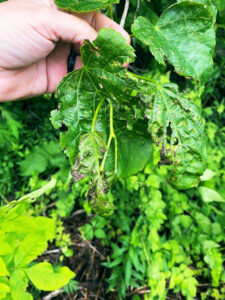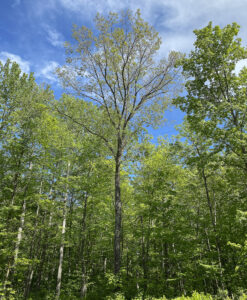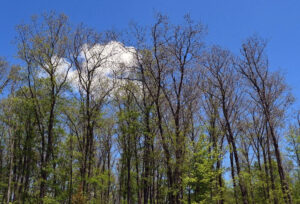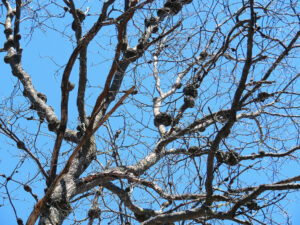By Linda Williams, DNR Forest Health Specialist, Woodruff;
Linda.Williams@wisconsin.gov or 920-360-0665

Basswood leaves show damage due to the feeding of introduced basswood thrips. / Photo Credit: Linda Williams, Wisconsin DNR
For the third consecutive year, damage from introduced basswood thrips (Thrips calcaratus) is significant in some areas of northeast Wisconsin, especially Forest County.
Introduced basswood thrips are tiny, invasive insects that feed inside tree buds in early spring. The feeding causes leaves to deform when they expand, looking like they suffered frost or wind damage.
Continue reading “Basswood Trees Short On Leaves Due To Thrips”




